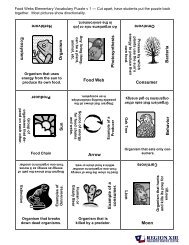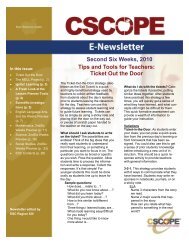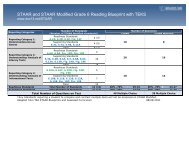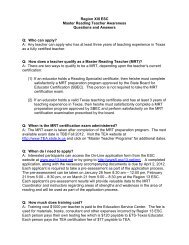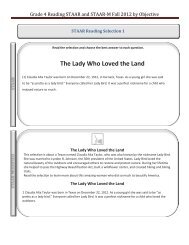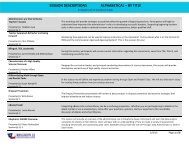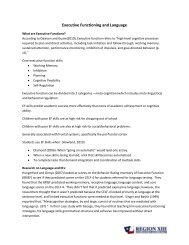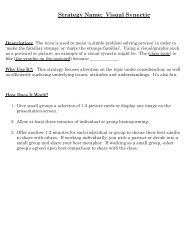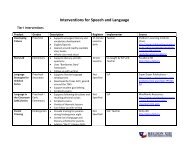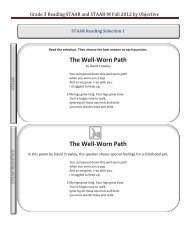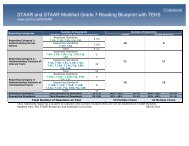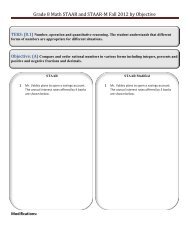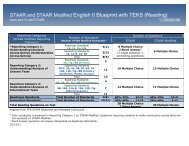Transition Inventory Manual - Region 13
Transition Inventory Manual - Region 13
Transition Inventory Manual - Region 13
Create successful ePaper yourself
Turn your PDF publications into a flip-book with our unique Google optimized e-Paper software.
<strong>Region</strong> XIII Education Service Center<br />
4<br />
The Components<br />
Below are brief descriptions of the components of the <strong>Transition</strong> Support Process.<br />
Life Domains<br />
The Life Domains are the four basic areas addressed in transition:<br />
• Social/Recreation/Leisure<br />
• Independent Living<br />
• Lifelong Learning<br />
• Employment<br />
Performance Categories<br />
The Performance Category represents the student’s current functional ability (what the student can<br />
do right now) level of independence.<br />
Performance Expectations & Major Life Roles<br />
A Performance Expectation is a desired end point of educational programs for ALL<br />
individuals. These expectations are based on Major Life Roles in which the student should<br />
consistently perform. The Performance Expectations (a) are performance oriented; (b) drive<br />
program elements and assessment systems; (c) reflect empowerment; (d) aid in understanding<br />
criteria for an outcome achievement; and (e) provide orientations that relate to the fulfillment of<br />
an adult living role.<br />
Environments<br />
The structure and atmosphere where performance expectations will be accomplished<br />
are environments. These include school, instructional arrangements, community, and home.<br />
Focus Areas<br />
Explore focus areas for opportunities to provide educational experiences/procedures that<br />
stimulate learning. Activities occur within the environment to assist in achieving the<br />
performance expectation, for example: instructional delivery, learning experiences, home,<br />
school, and community.<br />
Supports<br />
Related sources that assist the student in fulfilling their goals and objectives are supports. Peers,<br />
friends, family, technology, funding, public schools, and adult service providers are examples.<br />
<strong>Transition</strong> Decision-Making Matrix<br />
The matrix is a guide that help identify educational or performance expectations for each category<br />
within the life domains of transition. It is most effective when used as a decision-making tool in<br />
which all participants contribute and build consensus in final decisions regarding student outcome<br />
goals and objectives.



